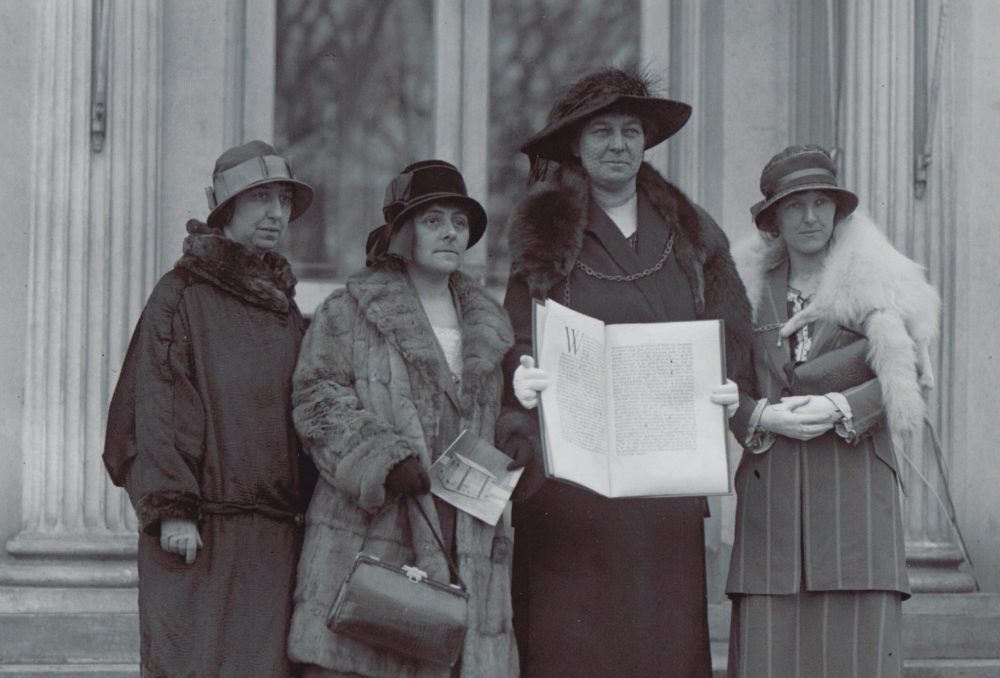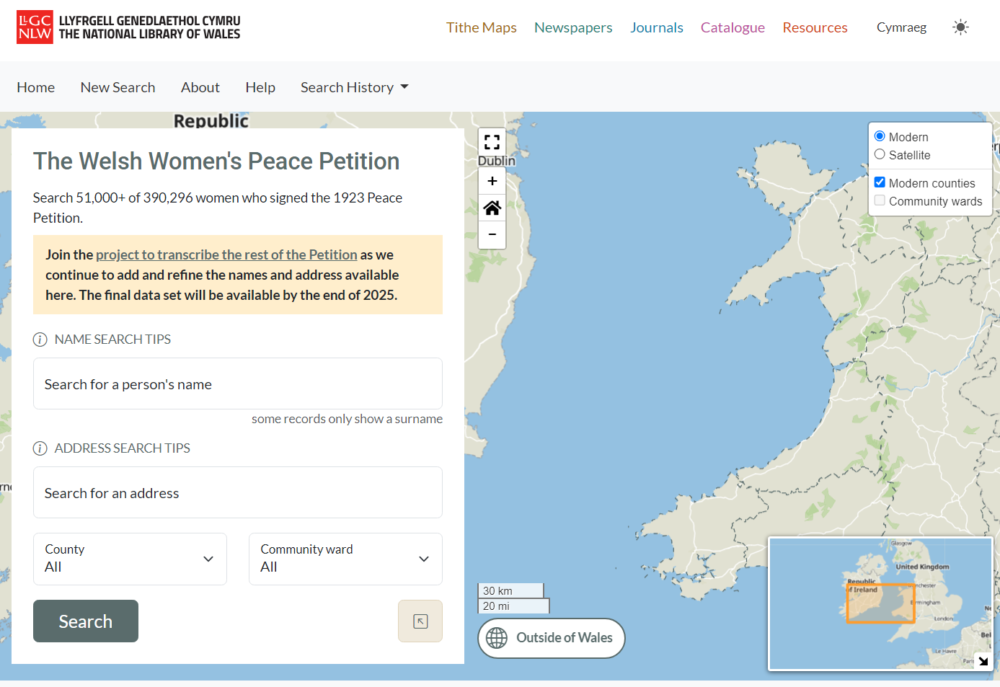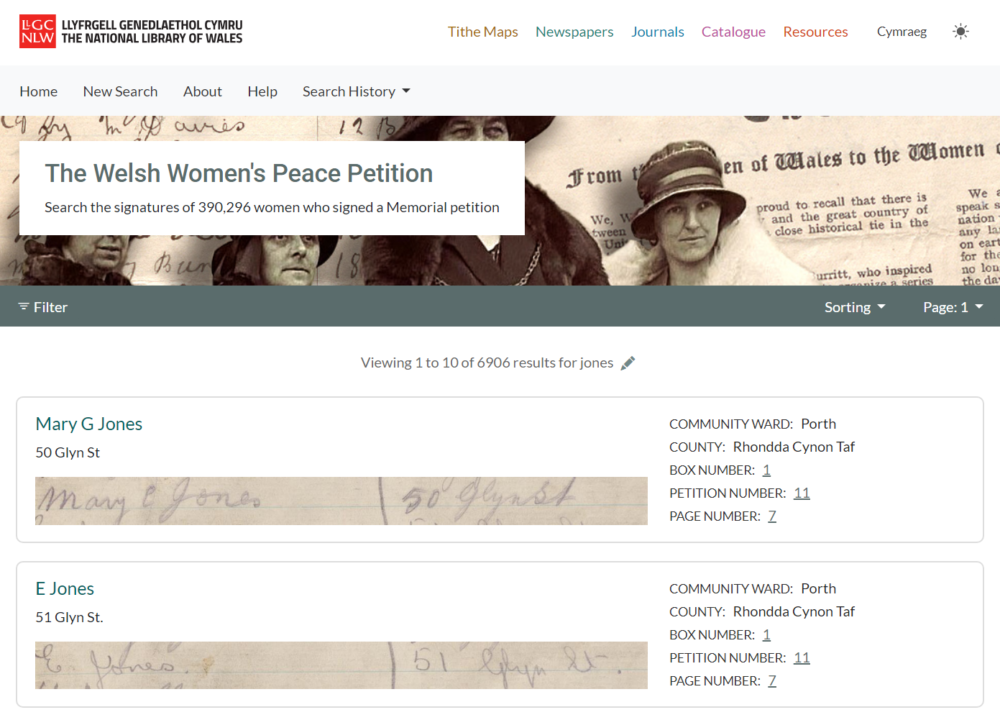Wales Women’s Peace Petition now searchable on new website

The Wales Women’s Peace Petition has taken a further step forward towards being fully searchable and accessible to all thanks to the launch of a new website.
Following intensive transcription work by hundreds of online volunteers, the new website launched by the National Library of Wales coincides with the United Nations International Day of Peace on 21 September.
Of the 390,296 women that signed the historic petition demanding world peace in 1923, over 240,000 names have now been transcribed by volunteers on the crowdsourced project.
50,000 of these signatures have now been verified and added to a new website where users can search for names, houses, streets, and places giving people an user-friendly way of finding relatives and places of interest.
It provides us with a glimpse into the lives of these women of Wales who had lost so much, and attempted to stop that loss from ever happening again.
The transcription process is still ongoing and recruiting new people to help to complete the project. If you want to take part visit the transcription website for more information.
Hidden histories
Catrin Stevens, one of the key participants in the project and transcriber, has reflected on her experience.
“My name is Catrin Stevens and I represented Archif Menywod Cymru / Women’s Archive Wales on the Peace Petition Partnership / Partneriaeth Hawlio Heddwch. WAW was asked to help with retrieving the hidden history of the peace petition and we served too on the research committee.
“I researched the local organisers (412 of them from every part of Wales) for the chapter on the actual practical work of collecting the signatures, and this article appeared in the volume Yr Apêl / The Appeal which was published in November 2023.
“Because of this involvement I have given c. 40 talks to various local and national groups about this aspect of the petition’s background and history.
“Since December 2023 I have also contributed to transcribing the petition.”

Are there any stories that struck you when you worked on transcribing the peace petition?
“I have transcribed manifests from all over Wales and in doing so have learned a great deal about these localities and I have found the signatures of several of the local organisers whom I had been researching. This always gives me satisfaction because it brings these organisers alive and is physical proof of their existence. I add their catalogue references to the research entries I have about them.
“I also enjoy in particular transcribing the manifests from areas that I know well e.g. Aberystwyth, Maenclochog and Loughor, where I live now.
“I was taken aback to find several women signing with a cross because they were illiterate and several unable to spell their own names or that of their addresses.
“The two entries which have touched me most however were:
- “The signature of G F L Hyde 73 Stanley Street Senghennydd who has written after her name ‘No More War’ – further proof if needed that these women were well aware of the significance of the petition and the campaign for ‘world peace’
- The signature of my aunt (my father’s sister born in 1904 and therefore 20 years old and eligible to sign the petition , died 1999) who actually brought me up after the death of my mother when I was six weeks old. She lived in Ffosybontbren, Henfynyw, Aberaeron in 1923/4. Although she left school when she was c. twelve years old and worked as a maid in private houses for most of her life her signature, Letitia J Davies, is clear and neat. I’m proud of my Anti Let!”

How do you feel seeing that transcription work reaching the new website and being made available for the public to search?
“This fulfils the object of the whole project and our main aim when we began on the journey of researching and writing this story in 2018.
“Finding family members and other participants from our localities gives so much pleasure and the transcribed petition will be invaluable in tracing family histories and connections and for historians generally.”
What are your hopes for the legacy of the project and wider partnership surrounding the petition?
“Researching the background of the petition and transcribing its contents is just the beginning I feel of the legacy of the Peace Petition. We are made aware in every meeting that we must maximise the legacy by emulating the aspirations of the 1924 petitioners and work for World Peace. We must use the Petition to inspire us and others
“As a historian I hope others will examine the signatories and extrapolate historical data and evidence which will inform us of women’s lives in the 1920s. This is a huge and exciting source for future historians.”
View the new Peace Petition website from the National Library of Wales here.
Support our Nation today
For the price of a cup of coffee a month you can help us create an independent, not-for-profit, national news service for the people of Wales, by the people of Wales.




